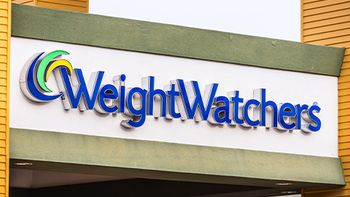LogiPharma USA is often known for its thought-provoking panel discussions, and this one was no different.
Along the track dedicated to next-generation cold chain logistics and a transparent, sustainable cold chain came an afternoon session surrounding “Distribution to Dispensation: Temperature Monitoring in the Expanding Ship-to-Home Market.”1
Panelists bring expertise across pharma and logistics
Moderated by Tony Fonk, president and CEO of SpotSee, he was joined by Jeff Lander, Moderna’s director of global logistics engineering; Nancy Fingerhut, Revelation Pharma’s vice president of quality assurance and regulatory affairs; and Thomas Synnot, Alexion Pharmaceuticals’ associate director of clinical planning and logistics.
The rise of direct-to-patient delivery
One of the conference’s central themes has been the growing popularity of therapies and specialty products, and with that, comes direct-to-patient delivery. This often involves the need to sustain temperature control from end-to-end in the midst of packaging, tracking, and patient touchpoints.
The goal of this session’s panel was to determine ways to:
- Build real-time visibility and control into the last mile
- Choosing the right level of monitoring, including an active, passive, or hybrid model
- Make sure packaging, technology, and courier services for at-home shipments are all aligned
- Alleviating risk in patient settings
Managing risks in temperature control
One topic that surfaced revolved around the biggest risks in terms of temperature control. How can one properly prepare?
“In quality, we talk about building that into your process. You have to mitigate those risks in the not only designing the package and the validation, but also managing the service providers to the end patient, ensuring that you have to guarantee, in the validation, that your threats can be received in control in that period of time,” said Fingerhut, whose company represents a national network of 503A and 503B compounding pharmacies. The risk is the service providers that are socially executing on that service and then managing any exception or deviation—while being that educator from the pharmacy and clinical patient relationship standpoint. Is the product acceptable for use? I think there's a pretty significant component in the shift to endpoint and patient education on receiving and knowing if the product is acceptable for use. It's sort of like a guarantee that as it's received, it's safe and effective for the patient.
Validation and regulatory scrutiny intensify
The challenge lies in prioritizing investments to mitigate these said risks as companies begin shipping to the point of use.
“In the last few years, it’s been about the validation package being scrutinized by regulators. Whether it's at the state level or even at regulatory bodies, they want to see more than what’s just going to be a regular validation,” Lander explained. “If you're doing tens of thousands of shipments, then how are six, nine, 12, 15 shipments reflective of what's happening in your real-world environment? How are you handling those outliers?
“What you end up seeing is that you have end cases. You may see spikes up to somebody's doorstep. You're testing to the outliers in your package validation, which is going to substantially lower your duration to be able to ship, and that will end up costing you more money in your packaging and logistics. There's more scrutiny over that, because how does 15 or 20, or even 50 shipments reflective of 1,050, or 100,000 shipments? Then you get into the tech monitoring, and what's your strategy? Last year, we implemented for all of our final aisle, real-time tracking. That was a result of, not necessarily product loss, but it was a result of direct point of administration, saying, how do I know my product? How do I know the product that you ship, a lot of tech monitor is still in range? How do I know that the product is viable? We'd have to go through our global contact center, we'd have to have pre-planned responses about how we validate so that you can be able to educate the customer on how it was going to be fit for use.”
Moderna had a 1.9% intercept rate over 40,000 shipments, representing product loss that needs to be reshipped. Lander added that it wasn't actually the product loss that encouraged the company to do temp monitoring in final mile for real time, but rather, the customer feedback that described how they know the product was still within the range.
Fast facts
- Major challenge: Customers often misuse temp monitors, with fewer than 30% activating them correctly despite multiple instructions.
- Moderna data: 1.9% intercept rate over 40,000 shipments; monitoring driven by customer confidence, not product loss.
- Alexion data: Fewer than 1% of shipments experienced issues thanks to strict workflows and trained couriers.
- Industry outlook: Greater regulatory scrutiny of validation, plus growing role of AI and machine learning in cold chain logistics.
Patients struggle with temperature monitor use
However, many patients and retail pharmacies struggle with using temperature monitors correctly. Despite including instructions on both the box and inside the package, fewer than 30% of people activated the device properly—per Moderna stats—with many of these being shipped to CVS, Kroger's, Sam's Club, and Walmart.
Alexion’s approach: Training and workflow optimization
As for Alexion, who was officially acquired by AstraZeneca in July 2021, the company shared positive results in terms of shipments having issues (reportedly less than 1%), whicb is due to its efficient processes.
“For the last mile, for either the material going to a CRO or going to the patient, we haven't had many issues,” Synnot commented. “The reason being is that it’s just a workflow, and our IRT that we have set up. For example, we ship something to a CRO site, and that CRO receives it, and we have World Courier or Marken retrieve the 10-pounders, and they stop them if they can't access that. We make sure before we set up these CROs, that they're trained.
“… With our workflows, we look for every single gap to cover ourselves. The only reason we notice is because we made the mistakes in the past. If World Courirer can't retrieve the material, they have to plug them on their end and download the data before they can register that material on their system, so now, we see everything. It was received properly ... If we're direct-to-patient, yes, we will make sure that we have direct signature and that the courier will be the person who shows up, opens it up, hands the material to the patient that says you need to put this in the fridge. They will be the one that we instruct the carrier to stop that on there, bring it back, and then we get it that day within a couple of hours.”
There was also discussion around considerations for choosing between active and passive monitoring, particularly for compound preparations, along with the potential of AI and machine learning to improve temperature control and reduce human interaction.
References
1. Fonk T, Fingerhut N, Lander J, Synnott T . Distribution to Dispensation: Temperature Monitoring in the Expanding Ship-to-Home Market. September 30, 2025. LogiPharma USA 2025. Boston.






